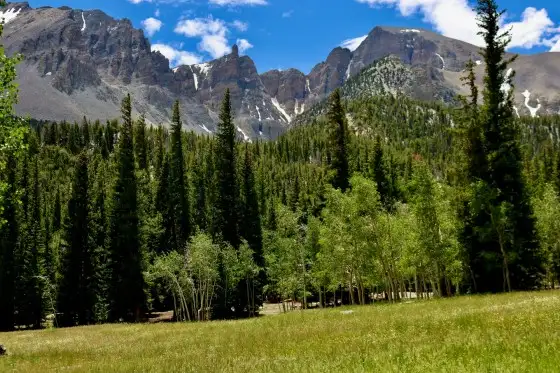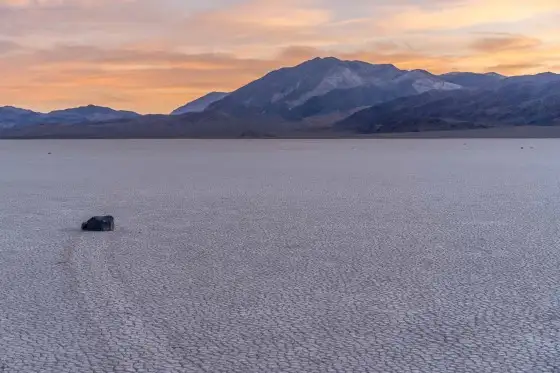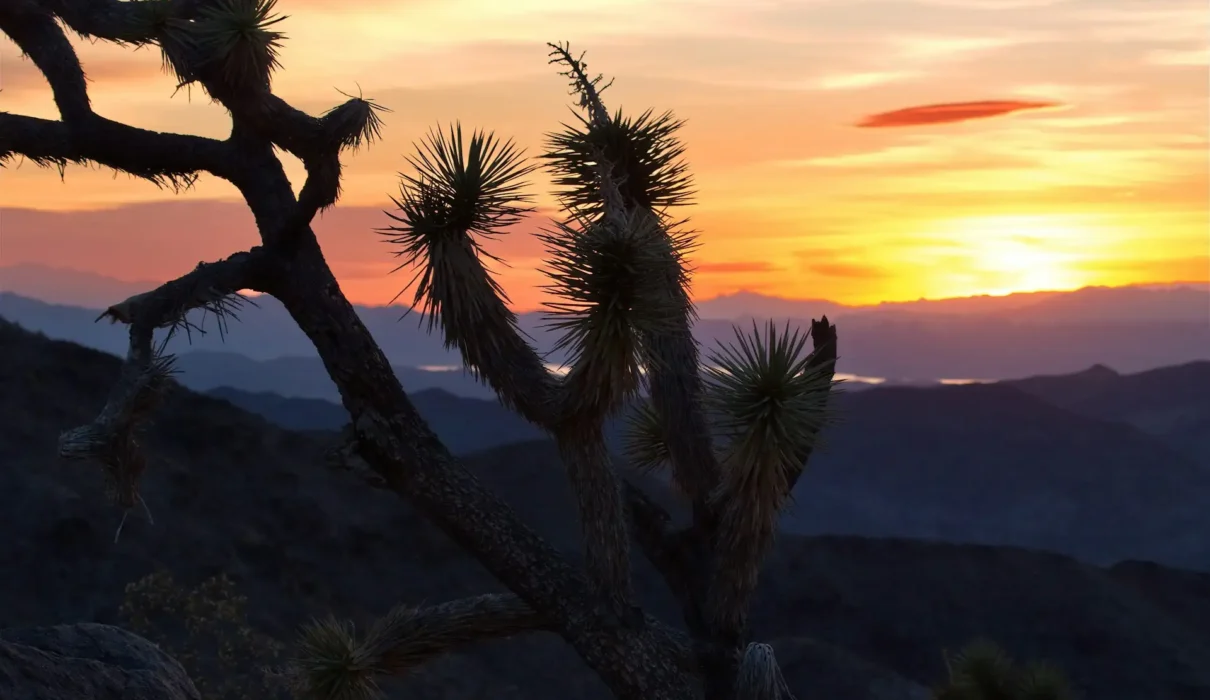Nevada , often known for the dazzling city of Las Vegas and vast desert landscapes, also surprises with its breathtaking national parks and nature reserves. These parks offer a unique variety of landscapes, from the majestic peaks of the Great Basin to the deep, hot valleys of Death Valley. In this article, we introduce you to the most important national parks in Nevada . Learn more about the special features of each park, the best times to visit, practical tips and the diverse outdoor activities that await you. Immerse yourself in the natural beauty of Nevada and be enchanted by the diversity and magic of its national parks.
overview
The National Parks of Nevada
Nevada , often known for its desert landscapes and gambling capital Las Vegas , is also home to impressive national parks and nature reserves. These parks offer a wide range of landscapes, from towering mountain peaks and vast deserts to historic ruins and unique geological formations. Here’s an overview of the top national parks to consider when planning your trip:
- Great Basin National Park : Famous for its stunning caves, alpine lakes, and majestic Wheeler Peak, Great Basin National Park is a paradise for hikers, cavers, and nature lovers.
- Death Valley National Park : One of the hottest places on Earth, known for its extreme landscapes, from high sand dunes to deep salt valleys, Death Valley National Park features unique geological formations and impressive desert flora.
- Lake Mead National Recreation Area : Known for its massive reservoir and surrounding desert and mountain landscapes, this recreational area offers numerous water activities and outdoor adventures.
These national parks offer an impressive variety of landscapes and experiences. Each park has its own unique characteristics and offers numerous opportunities for outdoor activities and nature experiences.
National parks in detail
Nevada offers an impressive variety of national parks that attract millions of visitors each year. These parks offer a wide range of landscapes, geological wonders, and outdoor activities. Here are some of the most popular and frequently visited national parks to consider when planning your trip:
Great Basin National Park
Great Basin National Park is a hidden gem in Nevada and is famous worldwide for its Lehman Caves , alpine lakes , and Wheeler Peak . The park covers an area of approximately 120 square miles (312 square kilometers) and offers visitors breathtaking views and numerous outdoor activities .
Lehman Caves is the centerpiece of the park, attracting visitors with its impressive limestone formations and historical significance. These fascinating caves provide ideal conditions for tours, photography and exploration. Wheeler Peak in particular offers stunning views over the valley, especially at sunrise.
The best time to visit Great Basin National Park is in spring and fall , when temperatures are mild and crowds are lower. Summer can be very busy, so it’s advisable to arrive early or explore lesser-known areas of the park. Winter offers a very special atmosphere and is ideal for snow sports such as cross-country skiing and snowshoeing.
There are numerous recommended hikes and activities in Great Basin National Park. The Bristlecone Pine Trail to the oldest known living trees is one of the most popular trails and offers spectacular views of the ancient pines. For adventurous hikers, the challenging climb up Wheeler Peak is a must, but requires experience and preparation. In addition to hiking, caving , wildlife viewing and camping are also very popular activities in the park. Great Basin National Park is a paradise for outdoor enthusiasts and offers unforgettable nature experiences in some of the most beautiful landscapes in the world.

Great Basin National Park
Immerse yourself in the untouched nature of the Great Basin National Park. Experience the impressive peaks, explore the Lehman Caves and enjoy the peace and seclusion of this unique park.
Death Valley National Park
Although Death Valley National Park is primarily associated with California , a small portion of the park also extends into Nevada. Known for its extreme desert landscapes and geological wonders , the park offers some of the hottest and driest conditions on earth, covering approximately 5,400 square miles (13,650 square kilometers).
Badwater Basin is the lowest point in North America and attracts visitors with its surreal salt flats and extreme landscapes. Dante’s View offers breathtaking views over the valley and is especially spectacular at sunrise and sunset.
The best time to visit Death Valley National Park is in winter and spring , when temperatures are more pleasant. Summer can be extremely hot, with temperatures often reaching over 50 degrees Celsius. It is important to bring plenty of water and sunscreen, and to avoid the hottest hours of the day.
Recommended hikes and activities in Death Valley National Park include the Golden Canyon Trail , which passes through colorful rock formations, and the Mesquite Flat Sand Dunes , which are great for hiking and photography. Stargazing is also a popular activity, as the park offers one of the darkest night skies in the United States. Death Valley National Park features unique geological formations and stunning desert landscapes that make any visit unforgettable.

Death Valley National Park
Known as the hottest, driest and deepest national park in the USA, Death Valley is located in California and extends into Nevada. This extreme land offers a unique landscape of salt flats, sand dunes, badlands, valleys and mountains, making it a fascinating destination for adventurers and nature lovers.
Lake Mead National Recreation Area
Lake Mead National Recreation Area stretches along the Colorado River and offers a variety of water activities and outdoor adventures . Lake Mead, the largest reservoir in the United States, and Lake Mohave offer boating , swimming , fishing and kayaking .
The Hoover Dam , one of the largest dams in the world, is one of the region’s main attractions, offering impressive views and informative guided tours. The surrounding desert landscape also offers numerous hiking and mountain biking trails.
The best time to visit Lake Mead National Recreation Area is in the spring and fall when temperatures are milder. In the summer, temperatures can get extremely high, but this provides ideal conditions for water sports.
Recommended activities in Lake Mead National Recreation Area include boating on Lake Mead, hiking the Redstone Trail through stunning red rock landscapes, and visiting the historic Hoover Dam . Lake Mead National Recreation Area is an ideal location for water sports enthusiasts and nature lovers looking to enjoy Nevada’s diverse landscape.
Story
The history of Nevada’s national parks is rich and diverse, marked by efforts to preserve and protect the state’s unique landscapes and ecosystems. Here are some important milestones in the history of Nevada’s national parks:
Early exploration and protection measures
Nevada’s stunning landscapes were explored early on by European settlers and explorers, leading to a growing awareness of the need to protect these areas. Death Valley National Park was established as a national monument in 1933 and elevated to national park status in 1994.
founding of the Great Basin National Park
In 1986, Great Basin National Park was officially established to protect the impressive caves, ancient bristlecone pines, and alpine landscapes. This move was an important milestone in the history of conservation in the United States and set the standard for the establishment of other national parks.
development of the Lake Mead National Recreation Area
Established in 1964, Lake Mead National Recreation Area protects the stunning aquatic landscapes of Lake Mead and Lake Mohave, as well as the surrounding desert areas. This recreation area offers a variety of recreational opportunities and is an important part of Nevada’s conservation efforts.
nature conservation and preservation
The establishment of these national parks was an important step in efforts to protect and preserve Nevada’s natural resources. Today, various organizations and government agencies work together to ensure that these valuable areas are preserved for future generations.
Facts and Figures
Nevada’s national parks offer an impressive variety of flora, fauna and geological wonders. Here are some interesting facts and figures that illustrate the importance and uniqueness of these parks:
Area and visitor numbers
- Great Basin National Park : The park covers 312 square kilometers and attracts about 150,000 visitors annually.
- Death Valley National Park : The largest national park in the continental United States, covering 13,650 square kilometers and hosting approximately 1.7 million visitors annually.
- Lake Mead National Recreation Area : This recreation area covers approximately 2,300 square miles and attracts over 7 million visitors annually.
flora and fauna
- Bristlecone Pines : Great Basin National Park protects some of the oldest known trees in the world, the bristlecone pines, which can live for over 4,000 years.
- Animal species : Nevada’s national parks are home to numerous animal species, including bighorn sheep, coyotes, lizards, and a variety of bird species.
- Plant diversity : The parks are home to a rich variety of plant species, from desert plants in Death Valley National Park to alpine plants in Great Basin National Park.
Geological features
- Lehman Caves : Known for their impressive limestone formations and historical significance in Great Basin National Park.
- Badwater Basin : The lowest point in North America in Death Valley National Park.
- Hoover Dam : An impressive engineering marvel in the Lake Mead National Recreation Area.
Experiences and activities
Nevada’s national parks offer a variety of unique activities and experiences that you may not find in other states. These special opportunities make a visit to these parks an unforgettable experience:
stargazing and night sky
Thanks to clear skies and low light pollution, many of Nevada’s parks are ideal for stargazing. Great Basin National Park and Death Valley National Park offer spectacular night skies that are popular with astronomers and night owls alike.
Photographing the unique landscapes
Nevada’s unique geological formations and impressive landscape offer countless opportunities for breathtaking photos. The colors and shadows in the parks are particularly spectacular at sunrise and sunset, creating perfect subjects for unforgettable shots. Whether the surreal salt flats in Death Valley, the majestic mountain peaks in the Great Basin or the impressive reservoirs in the Lake Mead National Recreation Area – photography enthusiasts will find their paradise here.
Outdoor adventures such as hiking, climbing and camping
Nevada’s national parks are a paradise for outdoor adventurers. Here are some of the most exciting activities you can enjoy in these parks:
- Hiking : From easy strolls to challenging mountain hikes, the parks offer a variety of hiking trails. Highlights include the Bristlecone Pine Trail in Great Basin National Park, the Golden Canyon Trail in Death Valley National Park, and the Redstone Trail in Lake Mead National Recreation Area.
- Caving : Lehman Caves in Great Basin National Park offer fascinating exploration opportunities for cave enthusiasts.
- Water Sports : Lake Mead National Recreation Area offers excellent opportunities for boating, swimming, fishing and kayaking.
- Camping : Many of the national parks offer well-equipped campgrounds that are perfect bases for your explorations. From alpine camping in Great Basin National Park to desert camping in Death Valley, there is a place to suit every taste and adventure level.
More natural highlights
In addition to the impressive national parks, Nevada offers a wealth of other natural wonders to discover. These landscapes, which are protected as national monuments, state parks or nature reserves, offer equally spectacular experiences and should not be missing from your travel list.
National Monuments
Nevada is home to numerous national monuments that protect unique geological, cultural and historical sites.
- Tule Springs Fossil Beds National Monument : Famous for its well-preserved fossils from the last Ice Age.
- Basin and Range National Monument : Protects a diverse landscape of mountains, valleys, and cultural sites.
- Gold Butte National Monument : Known for its impressive rock formations and petroglyphs that tell prehistoric stories.
state parks
Nevada’s state parks are also notable destinations that offer diverse landscapes and outdoor activities.
- Valley of Fire State Park : Nevada’s oldest and largest state park, famous for its bright red rock formations and ancient petroglyphs.
- Cathedral Gorge State Park : Offers unique geological formations and narrow gorges to explore.
- Berlin-Ichthyosaur State Park : Combines fascinating fossil finds with a historic ghost town.
Nature reserves and wilderness areas
Away from the well-known parks, Nevada has numerous nature reserves and wilderness areas that offer untouched nature and outdoor adventures.
- Red Rock Canyon National Conservation Area : This area offers impressive red rock formations and numerous hiking and climbing opportunities.
- Black Rock Desert-High Rock Canyon Emigrant Trails National Conservation Area : Known for its wide, open desert landscapes and historic trails.
- Mount Charleston Wilderness : Offers alpine landscapes and diverse hiking trails just a short drive from Las Vegas .
Conclusion
Nevada is a paradise for nature lovers and outdoor adventurers. The impressive national parks offer an incredible variety of landscapes, geological wonders and activities. Whether you want to explore the fascinating caves in Great Basin National Park, experience the extreme desert landscapes in Death Valley or enjoy the diverse water sports in Lake Mead National Recreation Area – Nevada has something for everyone.
In addition to the national parks, there are numerous national monuments, state parks and nature reserves that offer equally fascinating experiences. Whether you are looking for adventure, relaxation or photo opportunities, Nevada’s natural beauty and diversity will delight and inspire you.
Travel tips
Practical information for visiting the national parks in Nevada
Before you set off, here are some practical tips that can help you get the most out of your visit to Nevada ‘s national parks :
Entrance fees and park fees : Most national parks in Nevada charge an entrance fee, which varies depending on the park and length of stay. If you plan to visit multiple parks, it’s worth purchasing the America the Beautiful Pass, which gives you access to all national parks and federally protected areas for a year.
Best time to visit and climate : Nevada has an extreme desert climate, so the best time to visit is often in the spring (March to May) and fall (September to November), when temperatures are mild and crowds moderate. In the summer, temperatures can get extremely high, while the winter months can bring snow at higher elevations.
Getting there and parking : Most national parks in Nevada are easily accessible by car. Be sure to bring plenty of water, sunscreen and weatherproof clothing, especially if you’re going to be out for a long time. Parking can be limited at popular parks, so it’s a good idea to arrive early.
Safety instructions and rules of conduct : Always respect park rules and signs. Stay on designated trails to protect nature and ensure your safety. Find out about potential dangers such as extreme weather conditions or wild animals in advance and always carry enough water and snacks with you, especially on long hikes.


